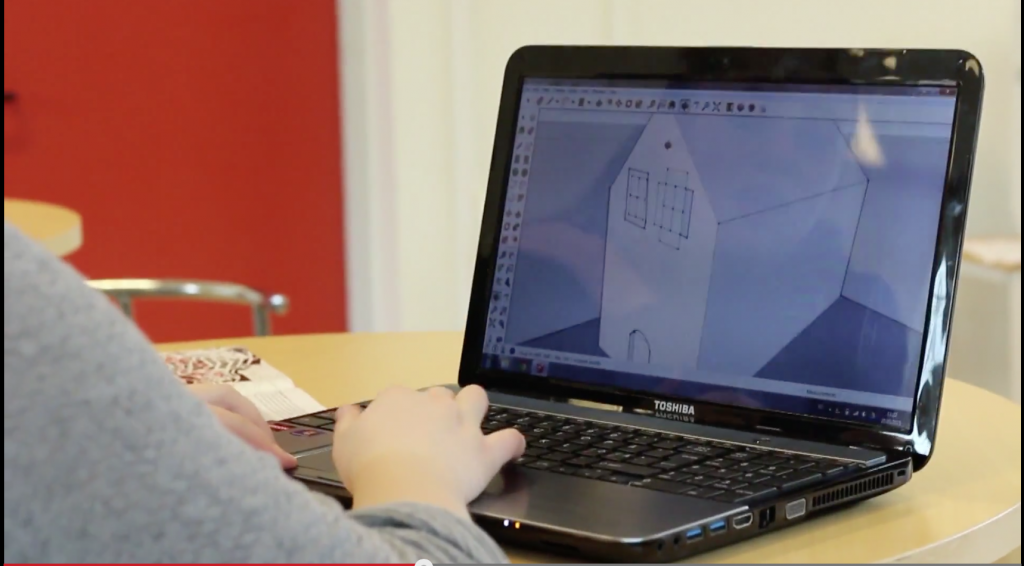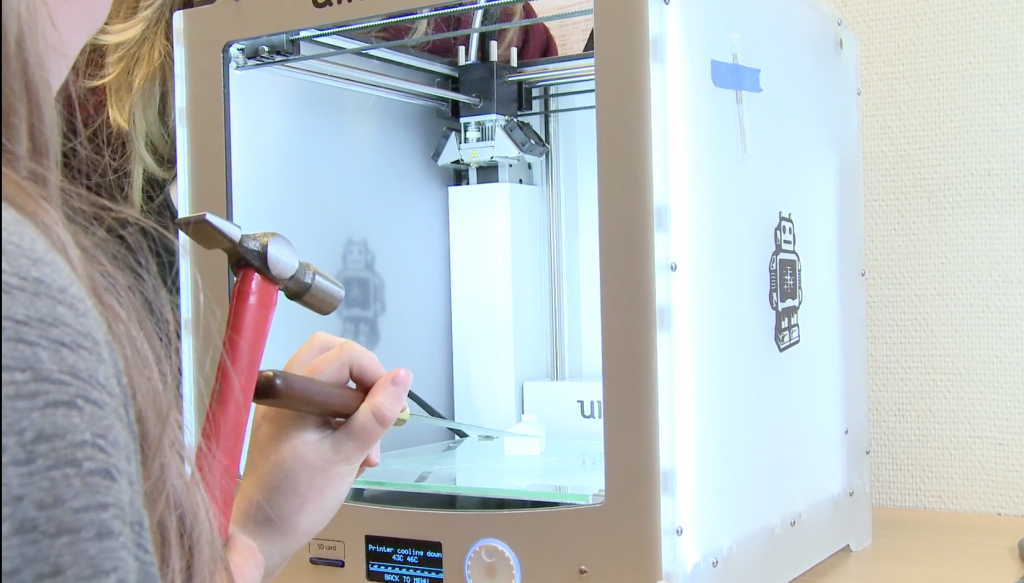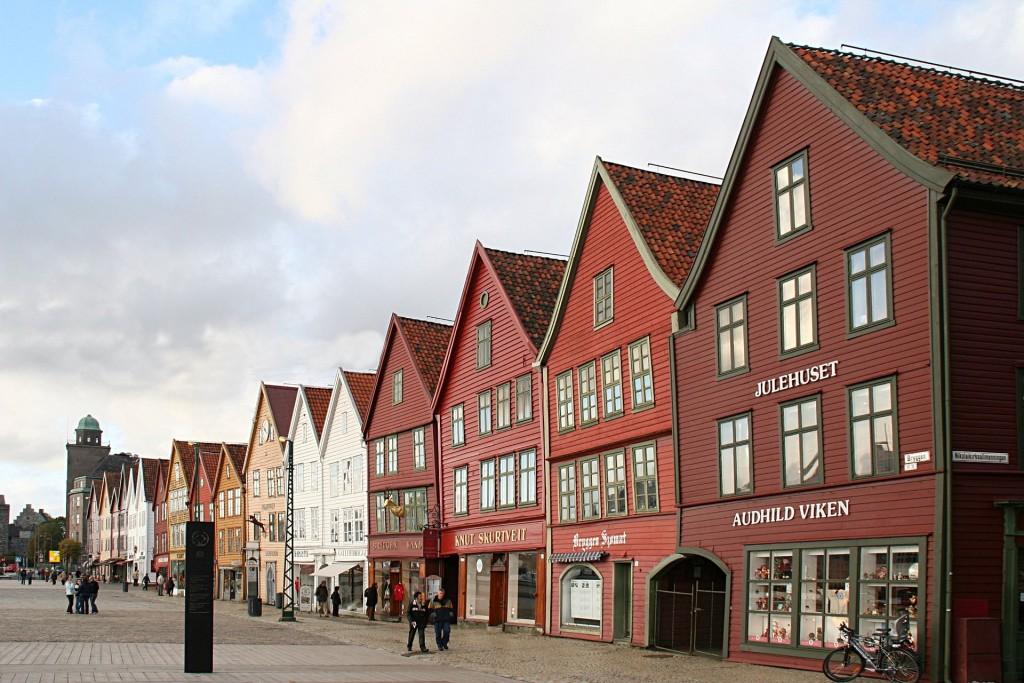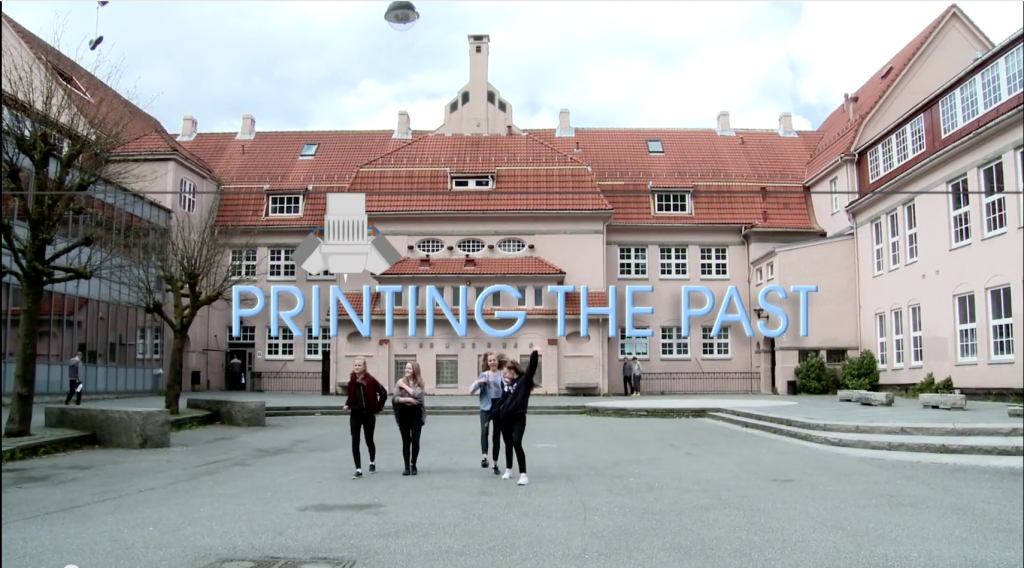Bergen is the second most highly populated city in Norway, having been surpassed by the capital Oslo only in the 1830s. It was founded in the 11th century most likely as a trading post and is, therefore, rich with history. It occupied a highly important place in the history of Norway as the site of battles, political maneuvering, and extensive trade. As such, it is home to a large number of historic buildings and, in fact, the area near the wharf known as Bryggen is a UNESCO World Heritage Site.
At the Rothaugen school in Bergen, eighth grade students are being introduced to cutting edge technologies through the Innovative Learning Project. The students enrolled in the class were divided up into groups and sent off to research local architectural history. This started, in a relatively low-tech fashion, with a visit to the library where students looked at actual books. Poring over printed material, they collected images and descriptions of the way their town looked in 1814.
The year 1814 was chosen for the project because the Norwegian Constitution was instituted on the 17th of May 1814, making it the oldest prevailing constitution in Europe. As the students learned about the history of Norway, an examination of the physical form of their city became an ideal mechanism for bringing together the content of their courses with an introduction to advanced technology.
 After collecting the visual and descriptive information from print sources, the students turned to SketchUp to create 3D models of the buildings as they were in 1814. After exporting their models, they took them to the school’s Ultimaker 3D printers and watched the layers build up into the physical version of the 3D drawings.
After collecting the visual and descriptive information from print sources, the students turned to SketchUp to create 3D models of the buildings as they were in 1814. After exporting their models, they took them to the school’s Ultimaker 3D printers and watched the layers build up into the physical version of the 3D drawings.
The excitement and enjoyment of the process is clear on the students’ faces as they watch their hard work become a reality. The students each describe their experience working on the project in the video at the top of this article. One of the things that the students learned is that as magical as 3D printing is…it’s not magic. It takes a lot of hard work and a lot of time to move the visions in your head through the process required for it to be 3D printed.
“Printing one building can take a lot of time,” said student Henriette Aasen Garmenn. “Each building takes about 1 1/2 to 3 hours. The whole class did 19 buildings. We had groups and each group made a building.”
 This month, the students were able to present all of their hard work at the Bergen Library for an audience of proud parents and community members. The buildings were placed on a scaled map along with written information about the project itself. While the students printed 19 buildings, that is only a small fraction of the historic architecture and their hopes are that the project continues with each successive class so that a complete 3D map of this historically significant time can be created.
This month, the students were able to present all of their hard work at the Bergen Library for an audience of proud parents and community members. The buildings were placed on a scaled map along with written information about the project itself. While the students printed 19 buildings, that is only a small fraction of the historic architecture and their hopes are that the project continues with each successive class so that a complete 3D map of this historically significant time can be created.
In this, we see yet another example of the way in which 3D printing works with history rather than against it. Although there is always the fear with any new technology that it is somehow erasing the past, it seems that here students are more connected than ever as a result of the role it played in making history real.
Let us know your thoughts on this innovative way of bringing together past and present in the 3D Printing Bergen forum thread over at 3DPB.com.
Subscribe to Our Email Newsletter
Stay up-to-date on all the latest news from the 3D printing industry and receive information and offers from third party vendors.
You May Also Like
Profiling a Construction 3D Printing Pioneer: US Army Corps of Engineers’ Megan Kreiger
The world of construction 3D printing is still so new that the true experts can probably be counted on two hands. Among them is Megan Kreiger, Portfolio Manager of Additive...
US Army Corps of Engineers Taps Lincoln Electric & Eaton for Largest 3D Printed US Civil Works Part
The Soo Locks sit on the US-Canadian border, enabling maritime travel between Lake Superior and Lake Huron, from which ships can reach the rest of the Great Lakes. Crafts carrying...
Construction 3D Printing CEO Reflects on Being Female in Construction
Natalie Wadley, CEO of ChangeMaker3D, could hear the words of her daughter sitting next to her resounding in her head. “Mum, MUM, you’ve won!” Wadley had just won the prestigious...
1Print to Commercialize 3D Printed Coastal Resilience Solutions
1Print, a company that specializes in deploying additive construction (AC) for infrastructure projects, has entered an agreement with the University of Miami (UM) to accelerate commercialization of the SEAHIVE shoreline...































